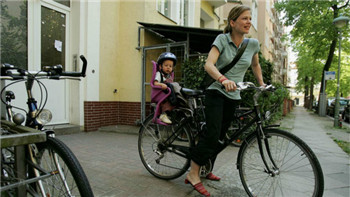(单词翻译:单击)

Like many an office novelty, agile working is becoming a corporate mantra. It has been on trend for at least 20 years and rather more commonplace since the arrival of the mobile phone and broadband.
如诸多职场新鲜事物一样,灵活工作制正在成为企业流行词。灵活工作制成为趋势已有至少20年,自从移动电话和宽带问世以来,灵活工作制变得愈加常见。
It seems like a win-win: employers measure employees’ output without sweating the time taken for a long lunch; employees gain a newfound autonomy that is unprecedented in postwar business practice. In some ways, it nostalgically mirrors student work styles: do it in your time, at your chosen place or indeed in your pyjamas.
这似乎是一场双赢:雇主们评定员工绩效时无需计较员工午饭时间过长;员工们也获得了在战后的职场中从未有过的全新自主权。在某些方面,它让人仿佛回到了学生时代:功课何时做随你,在哪做随你,或实际上穿着睡衣做也行。
Agile working is increasingly popular. According to a recent UK Labour Force Survey, nearly 10m people work remotely some or all of the time, and a study in February 2016 by Lancaster University found that about half of all employers planned to adopt agile or flexible working by 2017. But it may also be the case that agile working has hit a tipping point.
灵活办公如今越来越流行。最近一份英国劳动力调查(Labour Force Survey)显示,有将近1000万人有时或一直远程工作,另外,兰卡斯特大学(Lancaster University) 2016年2月的一项研究发现,大约半数雇主计划在2017年年底前采用灵活或弹性工作制。然而,灵活工作制也可能已经到了一个临界点。
Today’s agile working is a far cry from the simple flexitime of the 1980s. Now it involves working wherever you like, including from home, while you are connected to the office via chat systems, intranets and emails; flexitime simply meant coming in later every so often.
当今的灵活工作制与上世纪80年代的弹性工作时间制已相差甚远。现在你想在哪(包括在家)工作都行,工作时你可以通过聊天系统、内部网以及电子邮件与办公室保持联系;而弹性工作时间制仅仅是指时不时地晚来一会儿。
Agile working has attained more popularity based on the proposition that if you get your work done, you can take as much time off as you want. Compared to the old cumbersome mode of work, which involved commuting to an office, punching in, sitting at a desk, taking a break at an anointed hour and then the same in reverse, today work can be more flexible: arrive when you like, where you like, and leave when you want.
灵活工作制现已越发有人气,在你完成工作的前提下,你想休息多久都可以。相比以前通勤、打卡、坐下工作、在规定时间工休、然后倒序重来一遍的机械工作模式,如今的工作可以更灵活:随时随地,来去自由。
But herein lies a contradiction: the ability to produce work that is inclusive, fit for purpose and aligned to group goals is not always easy when you are working by yourself. Yes, withdrawing into the home office without interruptions has advantages, not least that you can think deeply through a problem without being interrupted. But the structure, rigour and discipline of systematised collaboration in a team are a prerequisite to much work.
但这里存在一个矛盾:当你独自工作时,拿出具有开放性、符合要求并与团队目标相一致的工作成果并不总是容易的事情。诚然,回家心无旁骛地工作有其优势,尤其是可以深入思考一个问题而不受干扰。但在一个团队中系统化协作的结构、严谨性以及规矩是很多工作的必要前提。
So, agile working by itself might not lead to agile thinking. Water-cooler disruptions can be annoying but they can also be creative. Workspaces can be oppressive, but a nomadic style that masquerades as agile work may lead to procrastination and thinking blocks. Regular encounters between colleagues in a safe space that is professional and nurturing can be the most productive. We call these offices.
因此,灵活工作制本身也许并不能导致敏捷的思维。饮水机旁的干扰或许令人讨厌但也可能激发创意。工作场所或许很压抑,但披着灵活办公外衣的自由工作方式,或许会导致拖延和思维受阻。经常跟同事们在一个既专业又有益的安全场所见面,可能非常有利于提高工作效率。我们称这些场所为办公室。
Let us not forget that for all the braggadocio of agile working and autonomy, it can be equally hard not to burn out — because we don’t log out. Documents are electronic, devices pocket-sized, bandwidth plentiful. But with the perpetual access comes the perpetual workday. You need never leave the office because it is in the palm of your hand, and the calm moments before you drift off to sleep are snatched away by sending “one last work email”. The hard boundaries of rigid work at least kept it out of our homes and out of our beds.
我们也不要忘记,尽管灵活工作制和自主权受到大力吹捧,我们同样也难免会心力交瘁——因为我们从不下班。文件是电子版的,办公设备是便携的,带宽是充足的。然而,随时随地都能办公,也就意味着工作时间没有结束的时候。你永远都不需要离开办公室,因为它就在你的掌中;连入睡前的宁静时光也被剥夺——你总是有“最后一封工作邮件”要发送。刚性工作制的严格界限至少会让工作远离我们的家和我们的床。
If a buzzing BlackBerry in bed is bad, unlimited paid vacation has its hurdles too. When Buffer, a software firm, introduced the policy for its employees in 2014, the founders came to a simple realisation: “It was only over time that we noticed, in our own experience, that we weren’t taking any.” And why not? For one reason, because a high achiever could always find one more thing to do, only in this case it was not an email at 11pm at night, it was working throughout the year. The solution at Buffer was to pay people $1,000 to have a vacation.
如果床上有只嗡嗡作响的黑莓(BlackBerry)手机是不好的,那无限的带薪休假执行起来也有障碍。软件公司Buffer在2014年为员工们设立了这项制度,几名创始人随后发现了一个简单的事实:“渐渐地我们才从自己的亲身体会中发现,我们根本没有休假。”为什么没有呢?一个原因是,成功人士总能发现还有一件事要做,不过在这里,这导致的不是晚上11点还在发电子邮件,而是全年无休地工作。Buffer的解决方案是付给人们1000美元去休假。
This does highlight the limits of agility: we need to have some parameters, a recognition that shutting the office door behind you and turning off your email is a necessary discipline for employees. Otherwise, agility might lead to sclerosis and fatigue.
这确实突显了灵活办公的局限:我们需要有些界限,需要认识到,关门离开办公室和关闭电子邮件对员工们来说是一条必要的规矩。否则,灵活办公也许会让你健康恶化、身心疲惫。


